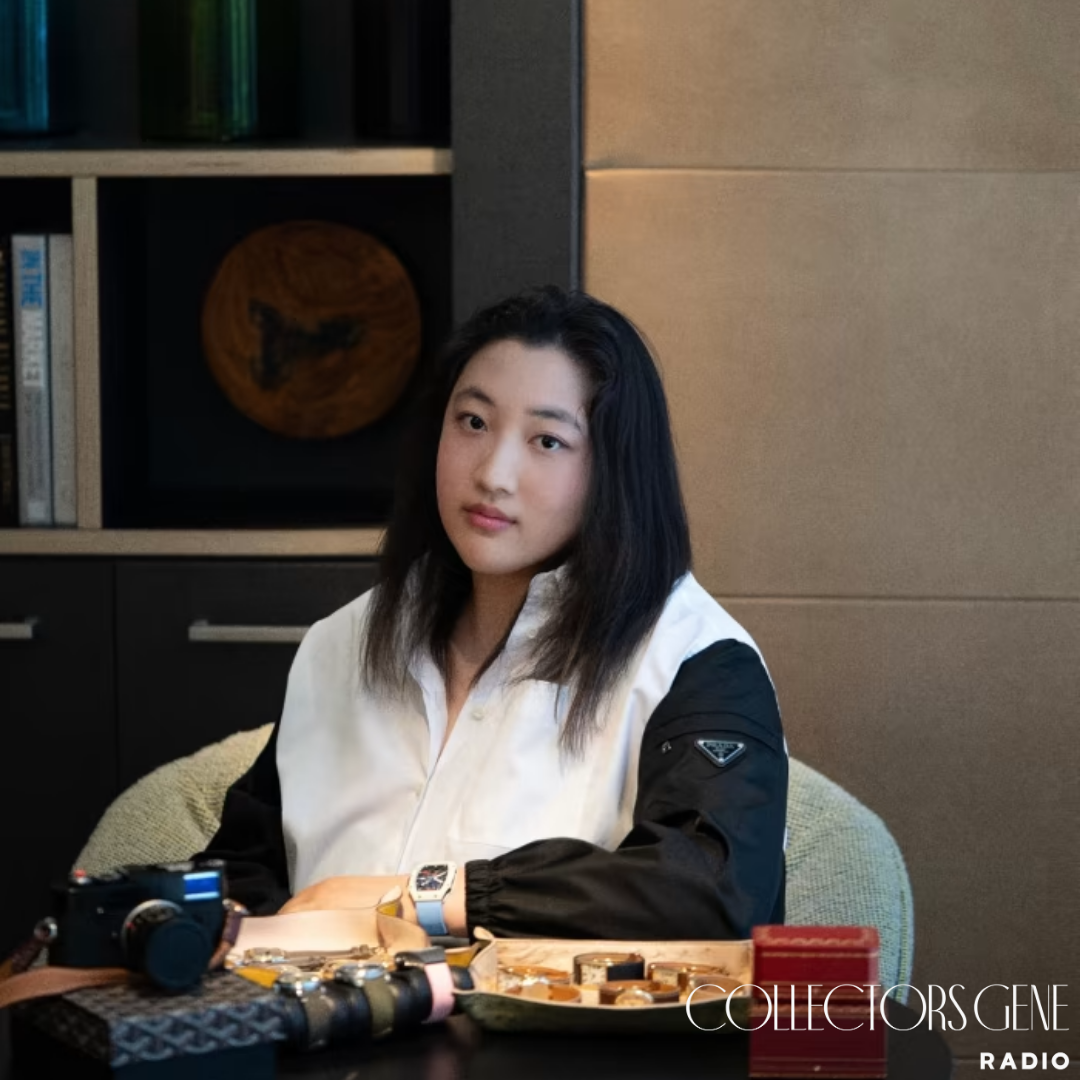When you think of American menswear, a few names always float to the top: Ralph Lauren, J.Crew, and now Todd Snyder. What makes Snyder’s story so compelling is not just his design pedigree but the fact that he’s a collector at heart. His creative world is built around chasing down the rare and the inspiring, whether it’s a mid-century chair, a Rolex Explorer, or a perfectly weathered Champion sweatshirt from the 1950s.
When I sat down with Todd for this episode of Collectors Gene Radio, it felt less like a straightforward interview and more like a therapy session for someone with the collecting bug deeply embedded in his DNA. He admitted as much by the end. And honestly, it showed from the start.
From Iowa to Ralph Lauren
Todd’s story begins far from New York fashion week and Fifth Avenue storefronts. Growing up in Iowa, he stumbled into menswear working at a small haberdashery, where he discovered Ralph Lauren. At the time, Ralph wasn’t just a logo but an aspirational universe that turned everyday staples like chinos, oxfords, and blazers into cultural touchstones.
Most people might have dreamed of working for Ralph. Todd just picked up the phone, cold-called, and kept showing up until he got in. That persistence set the tone for everything that followed. At Ralph Lauren, he learned tailoring and alterations before eventually finding himself in the fabled rig rooms which are spaces staged like film sets where eras and characters were conjured out of vintage garments, furniture, and ephemera. He admitted he used to sneak in before he was officially allowed, hungry to absorb as much history as he could.
J.Crew, Mickey Drexler, and The Liquor Store
From Ralph, Snyder moved to J.Crew under the leadership of Mickey Drexler, a figure he still speaks of with reverence. Menswear at J.Crew had always been an afterthought, tucked in catalogs and hidden in basements, until Drexler, with Andy Spade and Anthony Sperduti, decided to elevate it.
That experiment became The Liquor Store in Tribeca. A tiny space that turned into ground zero for J.Crew menswear. For Snyder, it proved menswear could have a stage of its own. From there came full-fledged J.Crew men’s stores, which gave Snyder the confidence to strike out independently. He left at forty, right as Lehman Brothers collapsed, a risky move that ultimately paid off.
Collecting Champion Before It Was Cool
This is where Snyder’s collector side shines through. Long before Champion became the darling of DTC brands and vintage resellers, Todd was combing through thrift shops in Japan, flipping through old yearbooks for references, and quietly building an archive of Champion sweats.
Today, he owns more than 2,000 pieces. When he first started collaborating with Champion, his archive was deeper than theirs. That’s when you know you’re a collector: when the brand itself calls you for reference material. For Snyder, the appeal isn’t just the logos or fabrics but the imperfections like cracked stencils, faded varsity lettering, or a gusset stitched in a way that tells a story of sweat and use. These aren’t just clothes, they’re cultural artifacts.
Beyond Sweatshirts: Furniture, Art, and Atmosphere
Champion might be the obsession that gets headlines, but Snyder’s collecting instincts go far beyond sweats. He’s deep into vintage furniture, constantly scanning 1stDibs and outfitting stores with pieces that carry as much weight as the clothes themselves. He jokes that selling furniture out of his stores became too stressful because every piece had to be replaced with something equally special.
Art is another category he can’t resist, influenced by his mother, who was an art teacher. He’s particularly drawn to Maine-based artist Corey Daniels, whose gallery he recently used for a lookbook shoot. Watches and cars fit into the picture too, less aggressively, perhaps, but with no less passion. He still recalls passing up a Rolex Explorer in Honolulu because he didn’t want to look like “the guy who ditched his girlfriend to buy a watch.” That one still stings.
What ties it all together is that Snyder doesn’t separate collecting from living. Whether it’s a store, a home, or a collaboration, he curates with the same instincts he uses when hunting for vintage sweats or mid-century chairs.
Collecting as a Way of Living
What struck me most is how seamlessly collecting bleeds into every corner of Snyder’s work. His stores feel like living rooms built from his own archives. Collaborations with Champion, Red Wing, Alden, or L.L. Bean don’t come from marketing brainstorms but from decades of obsession. Even when he designed cabins for a Maine resort, he approached them like Ralph’s rig rooms, naming each Seaside, Mountainside, or Countryside and filling them with atmosphere as much as objects.
For Todd, collecting isn’t about volume. It’s about storytelling. Every chair, every sweatshirt, every piece of art is part of a bigger narrative that feeds back into his design language. That’s why his clothes feel lived-in and soulful in ways mass fashion can’t replicate.
The Collectors Gene Rundown
The One That Got Away: A Rolex Explorer (1655) in Hawaii with box and papers for $15,000. He passed, and now it’s worth multiples of that.
The On Deck Circle: Furniture. As his retail footprint expands, he’s actively sourcing mid-century modern pieces to outfit new stores.
The Unobtainable: Art. It’s the most inspiring and the most dangerous category. Certain works are forever beyond reach, but the pursuit never ends.
The Page One Re-Write: If he had to start fresh, photography would top the list. Truthfully, he’s already woven most of his passions into his work.
The GOAT: Matt Jacobson. From his homes to his watches and impeccable taste, Snyder calls him a hero in collecting.
The Hunt or The Ownership: The hunt. Selling, like the time he let go of his vintage Land Cruiser, always feels bittersweet.
Do You Feel That You Were Born With The Collector’s Gene?: Yes. Looking around now at his Champion archive, furniture, watches, and art, he admits it’s become a defining part of who he is.
Closing Thoughts
Talking with Todd Snyder reminded me that collecting isn’t always about hoarding objects or chasing market value. At its best, it’s about curation, atmosphere, and personal history. Snyder’s collections feed directly into his design work, giving his stores and clothes a soul that can’t be faked.
It’s one thing to design a sweatshirt. It’s another to design a sweatshirt after digging through seventy years of Champion archives and knowing exactly why that gusset or that stitch matters. That’s what makes Todd Snyder stand out. He’s not just a designer, but a collector through and through and someone who proves that the collector’s gene can shape an entire creative universe.





